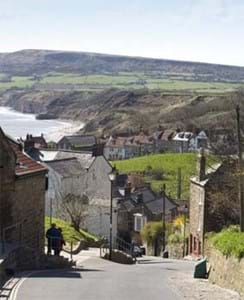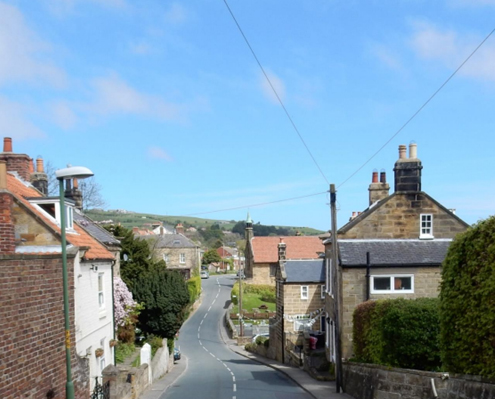A Brief History of The Villages of Fylingthope and Robin Hoods' Bay

Fylingthorpe and Robin Hood’s Bay - A brief History.
Most of Robin Hood’s Bay and Fylingthorpe were build at the turn of the eighteenth century, though the villages go back to even earlier foundations – Vikings – perhaps outlaws – certainly back to a prosperous fishing community, whose lives are recorded and still reflected in many aspects of the Bay.
The Bay was a ‘fisher townlet of twenty boats’ in the reign of Henry VIII and fishing maintained the community over the centuries. However, as modern technology brought a decline for the coble and small fishing craft, the population decreased and many cottages became empty or occupied only in the summer. Yet as a holiday resort the structure and fabric of the place have been preserved.Fylingthorpe was formed around an ancient crossroads where roads met and divided forming a triangle that is now a playground. It is thought that the location of the settlement was chosen because of the ready supply of fresh water from the Thorpe Beck which now also forms a picturesque ford through the village and under the stone bridged wall at Thorpe Hall.
Thorpe Hall is one of the oldest buildings in Fylingthorpe with parts dating back to the 16thcentury. Most buildings in Fylingthorpe and Robin Hood’s Bay have a pretty, traditional pantiled roof with dormer windows. Decorative gates and doors, date stones, finger posts and old standpipe add historic character and tell a story of how the village has changed over time.

Fylingthorpe is surrounded by fields interspersed with tree lined watercourses and open moorland beyond, which is the location of many prehistoric burial mounds. The Victorians and Edwardians built their houses along Thorpe Lane to appreciate the view of the countryside and the village expanded, so that it meets Robin Hood’s Bay. Thorpe and Bay have been closely associated over many centuries with past residents making a living from both agriculture and fishing.
Come stay with us and enjoy a historical walking tour of the area.

